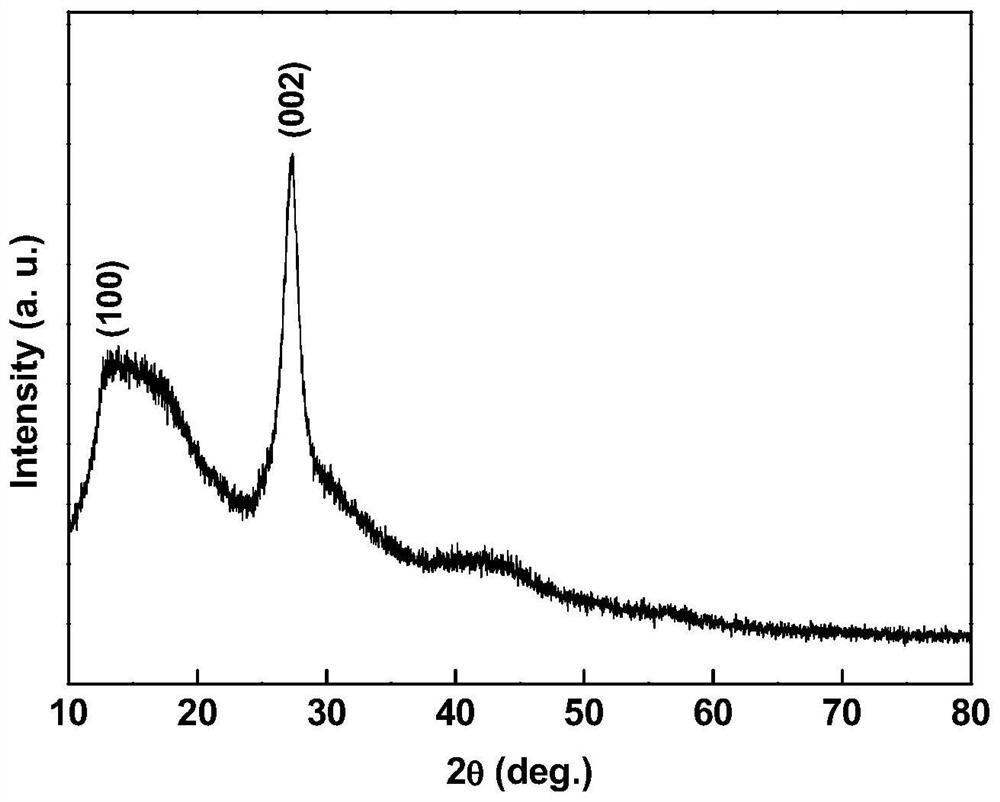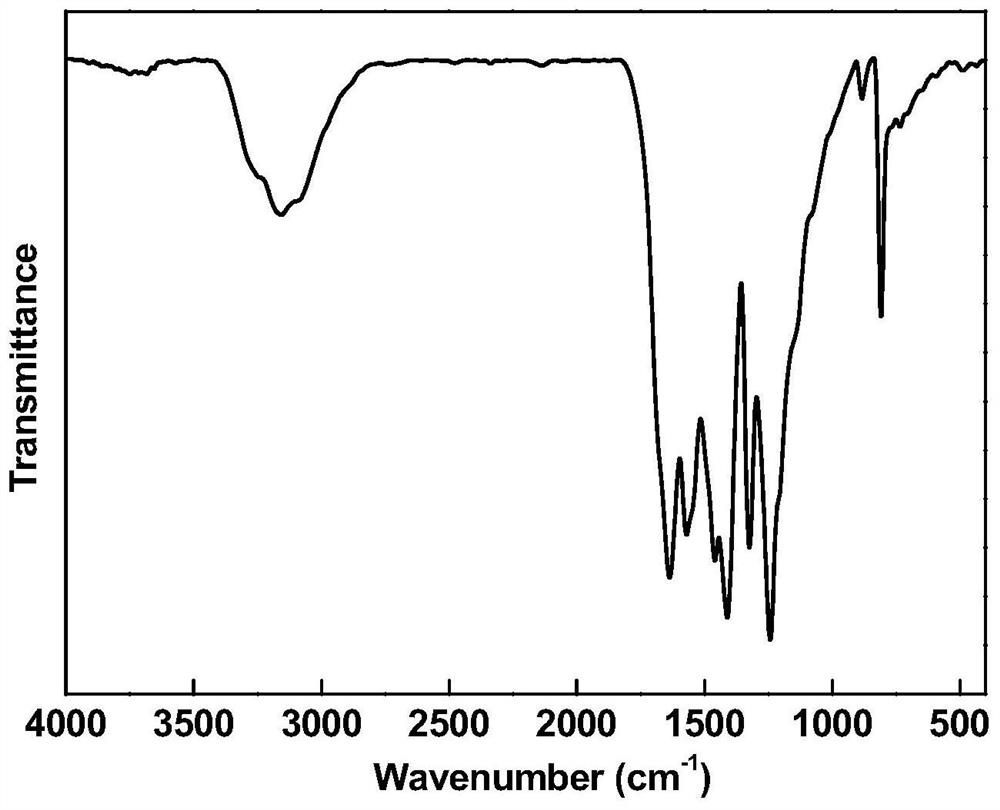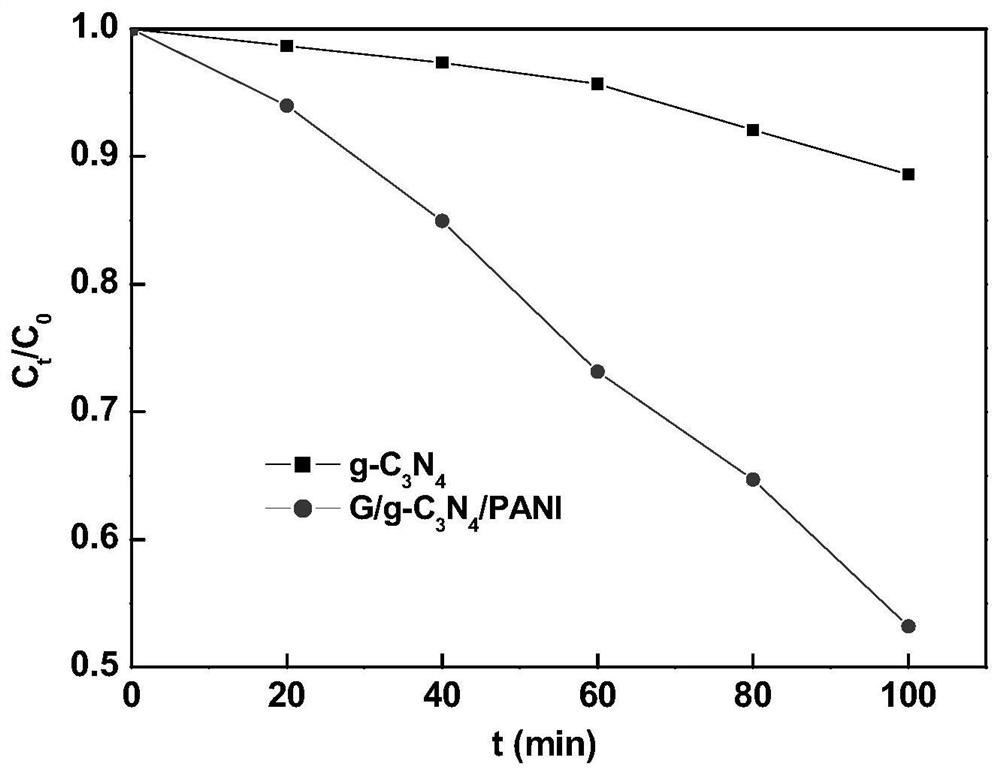Novel ternary composite visible-light-induced photocatalyst for efficiently and stably treating hexavalent chromium wastewater and synthesis method thereof
A ternary composite, synthetic method technology, applied in physical/chemical process catalysts, organic compound/hydride/coordination complex catalysts, chemical instruments and methods, etc., can solve the separation efficiency and transmission rate of photogenerated electrons and holes Increase, the photocatalytic performance is not enough, etc., to achieve the effect of low cost, abundant and easily available raw materials, and high visible light catalytic activity
- Summary
- Abstract
- Description
- Claims
- Application Information
AI Technical Summary
Problems solved by technology
Method used
Image
Examples
Embodiment 1
[0040] 1. Graphene / g-C 3 N 4 / Synthesis of Polyaniline Ternary Complex:
[0041] 1) g-C 3 N 4 Synthesis of melamine: Heat 3g of melamine from room temperature to 580°C at a heating rate of 2.8°C / min, keep it at 580°C for 5h, and then cool it down to room temperature naturally.
[0042] 2) Polyaniline / g-C 3 N 4 Synthesis of binary complexes: Weigh 50 mg of polyaniline powder and dissolve it in 25 ml of N,N-dimethylformamide, and add 1 g of the prepared g-C 3 N 4 , and then sonicated for 1h and magnetically stirred for 2h to disperse evenly, and then heated and evaporated to dryness of N,N-dimethylformamide solvent at 145°C.
[0043] 3) Graphene / g-C 3 N 4 / Synthesis of Polyaniline Ternary Complex:
[0044] 1g polyaniline / g-C 3 N 4 The binary composite, 10mg single-layer graphene oxide and 250mg ascorbic acid were mixed in 40ml deionized water, and then the mixture was sealed in a 50ml polytetrafluoroethylene-lined stainless steel high-pressure axe, hydrothermally t...
PUM
| Property | Measurement | Unit |
|---|---|---|
| band gap | aaaaa | aaaaa |
Abstract
Description
Claims
Application Information
 Login to View More
Login to View More - R&D
- Intellectual Property
- Life Sciences
- Materials
- Tech Scout
- Unparalleled Data Quality
- Higher Quality Content
- 60% Fewer Hallucinations
Browse by: Latest US Patents, China's latest patents, Technical Efficacy Thesaurus, Application Domain, Technology Topic, Popular Technical Reports.
© 2025 PatSnap. All rights reserved.Legal|Privacy policy|Modern Slavery Act Transparency Statement|Sitemap|About US| Contact US: help@patsnap.com



